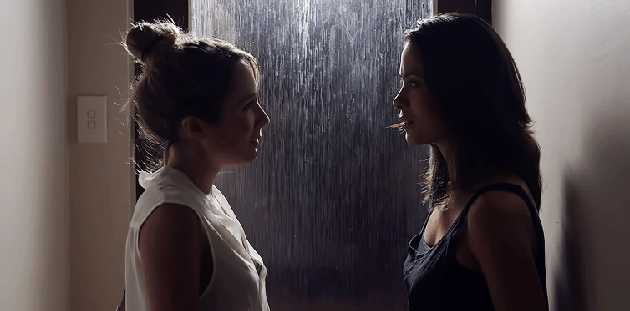 The recent Film, Television and Digital Games Survey, conducted by the ABS for Screen Australia, showed a staggering growth in web series made in Australia: from just 107 episodes in 2012 to 3,248 in 2016. At the same time, the amount of TV drama broadcast fell from 632 hours to 497, while the quantity of TV documentaries being made dropped from 566 hours to 444. This explosion in web series is fostering a far more democratic platform than TV or cinema.
The recent Film, Television and Digital Games Survey, conducted by the ABS for Screen Australia, showed a staggering growth in web series made in Australia: from just 107 episodes in 2012 to 3,248 in 2016. At the same time, the amount of TV drama broadcast fell from 632 hours to 497, while the quantity of TV documentaries being made dropped from 566 hours to 444. This explosion in web series is fostering a far more democratic platform than TV or cinema.
This week at Melbourne Webfest, 50 series from Australia and around the world are competing in 21 categories, with the winners announced at a gala event on Sunday. The Melbourne awards follow the Australian Online Video Awards, and international events like The Webby Awards, The Streamy Awards, and LAWebFest.
The relative youth of the world’s major web festivals reflects the immaturity of the form itself. But these fests are growing up fast, and online content is being taken seriously by industry elders in broadcast TV and cinema: both the Emmy and AACTA Awards now welcome online video into some categories.
It may be that the Screen Australia figures don’t show the true scale of the growth, as online content isn’t always produced by an established production company or broadcaster, making it difficult to track. Still, while 2011 may not be the Year Zero the statistics suggest, there can be little doubt that there’s been extraordinary growth in this mode of TV production.
Who is making the content?
Drilling down into demographics is tricky given the nature of the web, but some high profile success stories help to paint a picture of who’s behind this surge. Women feature strongly, with comedy stand-outs from producer Tamasin Simpkin (The Katering Show), and the team behind SketchShe, a trio of female sketch comedians perhaps most famous for their lipsynch car videos.
Online has also been a great proving ground for LGBTIQ voices like Julie Kalceff, creator of Starting From … Now, and Jade of Death director Erin Good, a six-part supernatural drama. The web has given these emerging writers, directors, and producers the chance to create content that would have struggled to see the light of day in a conservative, risk-averse broadcast market.
Australian factual content also does well online. One example is YouTube science powerhouse Veritasium. Its creator, Derek Muller, came to YouTube as a 29-year-old, while working on the ABC’s Catalyst program.
It’s telling that while Catalyst has been pruned back at the ABC, Muller’s YouTube channel has gone from strength to strength, racking up an astonishing 4 million subscribers. His most popular video, on the Magnus effect, has over 34 million views.
Animation has also contributed to the growth in Australian web series. The Sexual Lobster YouTube channel, for instance, has been a recipient of Screen Australia and YouTube’s Skip Ahead funding program for Australian YouTubers. In 2016 the program awarded funding to three established YouTube channels for longer projects, either one-off films or pilot episodes.
ArtSpear Entertainment, which began as a live action project, has seen its subscriber base grow from just a few thousand to over a quarter of a million in just two years after shifting to parody animations of blockbuster movie trailers.
Amid the surge of new web series, there are also a sizeable number of very low budget projects, often produced by film students or recent graduates. That in itself is nothing new, with series like SYD2030, Flat Whites, and Newtown Girls examples of web pioneers from the early 2010s.
But while those early series may have lacked the production polish of a broadcast TV show, the passion of these shows’ makers is now matched by ever-improving production standards. WebFest’s Content Director, Alexander Hipwell, has noted a “massive jump” in quality web series.
Digital technology continues to level the playing field, allowing emerging talent to compete alongside bigger budget productions. Series made for as little as $2500 were selected for Melbourne WebFest over projects with budgets between $500,000 and $1,000,000. These “amateur” works may hold their own – competing even in the top festivals – alongside fully funded work.
So what does this mean for the traditional funding models, and regulatory frameworks? The Australian government is looking to recalibrate the screen industry through its review of screen content, while the broadcasters are working hard to find ways to stay afloat within their current business models and funding structures.
What is clear is that the screen industries are being gradually taken over by new content creators like those treading the red carpet at Melbourne Webfest. They will undoubtedly be at the forefront of the changes to come.
How web series are shaking up Australia’s screen industry
Sue Swinburne, Lecturer in Film and Screen Media Production, Griffith Film School, Griffith University and Richard Fabb, Senior Lecturer, Film and Screen Media and Creative Director, LiveLab, Griffith Film School, Griffith University
This article was originally published on The Conversation. Read the original article.
Image: Starting from … Now!
